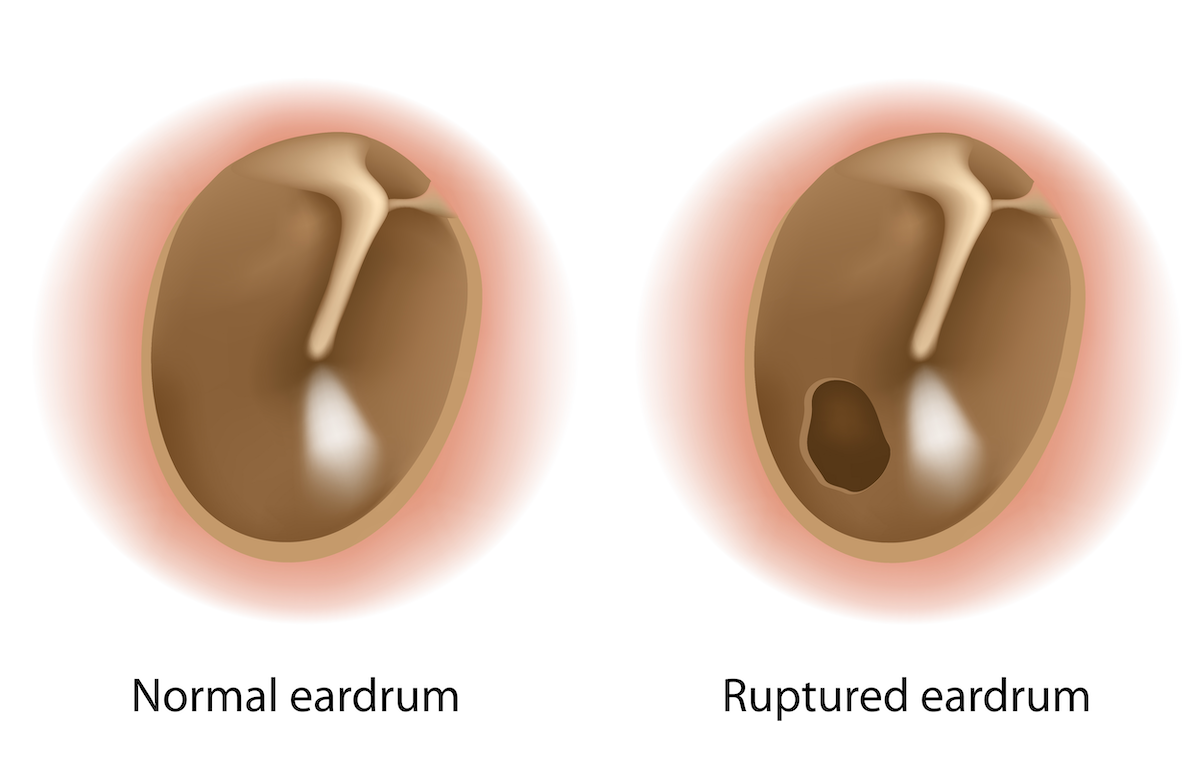Conditions: Tympanic Membrane Perforation
(Hole/Rupture/Perforation in the Ear Drum)
what is a perforation (rupture) of the ear drum?
The ear drum, or tympanic membrane, is a very thin sheet of tissue at the deep end of the ear canal. This acts as a barrier between the ear canal and the middle ear. When a hole (perforation, rupture) of the tympanic membrane occurs, the barrier is ineffective.
Right. Perforation of the tympanic membrane. This creates a passageway from the middle ear to the ear canal.
How is a tympanic membrane perforation diagnosed?
Often, looking in the ear with an otoscope by a physician is sufficient to make the diagnosis. Some subtle findings may require the experience and equipment of an ear specialist, including an ear microscope. A tympanogram, which is a test of how the ear drum reacts to mild air pressure, may also help in the diagnosis of a tympanic membrane perforation.
is a perforation of the ear drum a problem?
A hole in the ear drum allows air or fluid to pass in or out of the middle ear space. This can be a good thing in certain situations and a bad thing in others.
Benefits of a perforation:
Air pressure equalizes
Fluid from the middle ear (including infected fluid) can get out
Antibiotic ear drops can get into the middle ear via the perforation
Disadvantages of a perforation:
Potential for hearing loss (dependent on the size of the perforation)
water containing bacteria can get into the middle ear via the perforation and cause infection
what causes a tympanic membrane perforation?
Several conditions lead to a tympanic membrane perforation, including intentional creation of a perforation by a surgeon, but also infection, sudden pressure changes, proximity to an explosion, and accidental trauma (e.g. q-tip trauma).
When is a tympanic membrane perforation a good thing?
Situations in which the Eustachian tube is not functioning properly can cause problems with unequal air pressures affecting the tympanic membrane, which can lead to build up of fluid, infection, hearing loss and sometimes more serious problems such as cholesteatoma. When the benefits of a perforation exceed the down sides, a patient and their ear surgeon may decide to create a controlled perforation. Often, a small tube is positioned in the perforation to prevent the perforation from healing closed too soon.
Creating an incision in the tympanic membrane.
Positioning a tube within the perforation to keep it open.
The perforation allows fluid to drain through the tube. It also allows antibiotic drops to pass in through the tube. Air pressure is equalized on each side of the tympanic membrane as well.
When is a tympanic membrane perforation a bad thing?
If a perforation is not necessary to accommodate a poorly functioning Eustacian tube, a tympanic membrane perforation may be a liability because it could allow dirty water to pass through the perforation into the middle ear and set up an infection. Keeping an ear canal dry can avoid this problem, but doing so may be inconvenient. Additionally, a large tympanic membrane perforation may cause hearing loss due to the ear drum not being able to catch sound waves effectively.
This page









